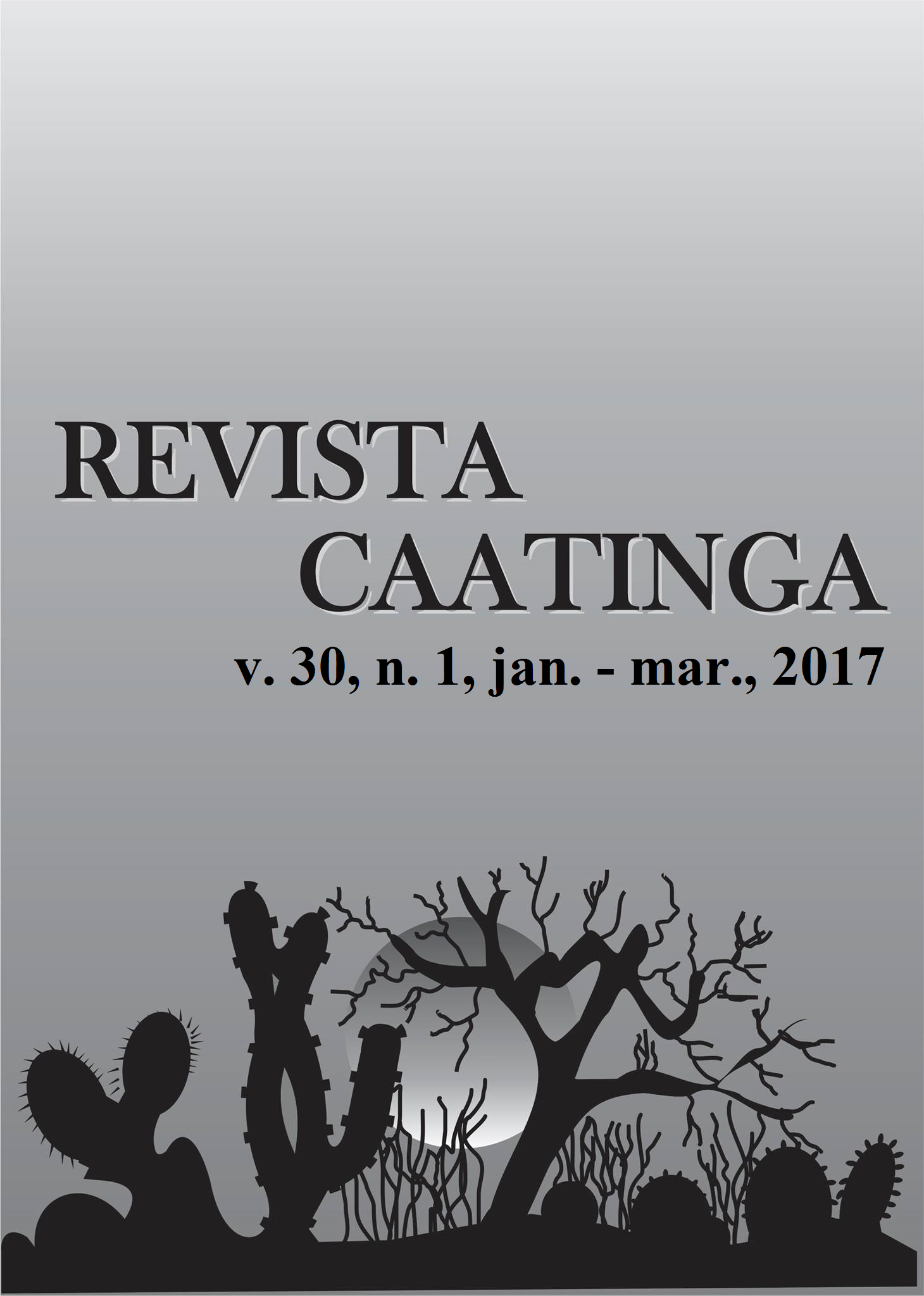DOSE-RESPONSE EFFECT OF Pochonia chlamydosporia AGAINST Meloidogyne incognita ON CARROT UNDER FIELD CONDITIONS
DOI:
https://doi.org/10.1590/1983-21252017v30n129rcKeywords:
Biological control. Daucus carota. Nematophagous fungus. Root-knot nematode.Abstract
The application of a bionematicide based on chlamydospores of Pochonia chlamydosporia (Pc-10) can be an important strategy for reducing the damage caused by Meloidogyne incognita on carrot. Based on this perspective, the nematicidal effects of 0, 0.5, 1.0, 1.5, 2.0, 2.5 and 3.0 kg ha-1 of Pc-10 were evaluated on carrot cv. Juliana under field conditions. Carrot yield and nematode population were influenced by increasing doses of Pc-10. The application of 3.0 kg ha-1 of Pc-10 increased the marketable production of carrot roots by 41.7% compared to the untreated control, whereas the production of unmarketable roots and the nematode population in the soil were reduced by 48.7% and 61.4%. The application of 3.0 kg ha-1 of Pc-10 reduces M. incognita population and improves carrot quality and yield.Downloads
References
CARNEIRO, R. M. D. G.; ALMEIDA, M. R. A. Técnica de eletroforese usada no estudo de enzimas dos nematóides de galhas para identificação de espécies. Nematologia Brasileira, Piracicaba, v. 25, n. 1, p. 35-44, 2001.
COUTINHO, M. M. et al. Controle de Meloidogyne javanica com Pochonia chlamydosporia e farinha de sementes de mamão. Nematologia Brasileira, Piracicaba, v. 33, n. 2, p. 169-175, 2009.
DALLEMOLE-GIARETTA, R. et al. Avaliação de um produto à base de Pochonia chlamydosporia, no controle de Meloidogyne javanica em alface e cenoura no campo. Nematropica, De Leon Springs, v. 43, n. 1, p. 131-137, 2013.
DALLEMOLE-GIARETTA, R. et al. Cover crops and Pochonia chlamydosporia for the control of Meloidogyne javanica. Nematology, Leiden, v. 13, n. 8, p. 919-926, 2011.
DALLEMOLE-GIARETTA, R. et al. Screening of Pochonia chlamydosporia Brazilian isolates as biocontrol agents of Meloidogyne javanica. Crop Protection, Amsterdam, v. 42, n. 1, p. 102-107, 2012.
DE LEIJ, F. A. A. M.; KERRY, B. R.; DENNEHY, J. A. The effect of fungal application rate and nematode density on the effectiveness of Verticilllium chlamydosporium as a biological control agent for Meloidogyne incognita. Nematologica, Leiden, v. 38, n. 1-4, p. 112-122, 1992.
DIAS-ARIEIRA, C. R. et al. Efficiency of Pochonia chlamydosporia in Meloidogyne incognita control in lettuce crop (Lactuca sativa L.). Journal of Food, Agriculture and Environment, Helsinki, v. 9, n. 3-4, p. 561-563, 2011.
HAY, F. S.; PETHYBRIDGE, S. J. Nematodes associated with carrot production in Tasmania, Australia and the effect of Pratylenchus crenatus on yield and quality of Kuroda-type carrot. Plant Disease, St. Paul, v. 89, n. 11, p. 1175-1180, 2005.
JENKINS, W. R. A rapid centrifugal-flotation technique for separating nematodes from soil. Plant Disease Reporter, St. Paul, v. 48, n. 1, p. 692, 1964.
MANZANILLA-LÓPEZ, R. H. et al. Pochonia chlamydosporia: Advances and challenges to improve its performance as a biological control agent of sedentary endo-parasitic nematodes. Journal of Nematology, Hanover, v. 45, n. 1, p. 1–7, 2013.
PODESTÁ, G. S. et al. Atividade nematófaga de Pochonia chlamydosporia em solo natural ou autoclavado sobre Meloidogyne javanica. Nematologia Brasileira, Piracicaba, v. 33, n. 2, p. 191-193, 2009.
PUERTAS, A. et al. Efecto de diferentes concentraciones de inóculo de la cepa IMI SD 187 de Pochonia chlamydosporia var. catenulata para el control de Meloidogyne incognita. Revista de Protección Vegetal, Habana, v. 21, n. 3, p. 74-79, 2006.
R DEVELOPMENT CORE TEAM. R: A language and environment for statistical computing. Vienna: R Foundation for Statistical Computing. Available from: <http://R-project.org>. Access on: April 10, 2014.
SILVA, G. O. et al. Seleção para resistência de genótipos de cenoura aos nematóides-das-galhas. Horticultura Brasileira, Brasília, v. 29, n. 3, p. 335–341, 2011.
STIRLING, G. R.; SMITH, L. Field tests of formulated products containing either Verticillium chlamydosporium or Arthrobotrys dactyloides for biological control of root-knot nematodes. Biological Control, Amsterdam, v. 11, n. 1, p. 231–239, 1998.
VIANENE, M.; ABAWI G. S. Hirsutella rhossiliensis and Verticillium chlamydosporium as biocontrol agents of the root-knot nematode Meloidogyne hapla on lettuce. Journal of Nematology, Hanover, v. 32, n. 1, p. 85–100, 2000.
VIGGIANO, J. R.; FREITAS, L. G.; LOPES, E. A. Use of Pochonia chlamydosporia to control Meloidogyne incognita in cucumber. Biological Control, Amsterdam, v. 69, n. 1, p. 72-77, 2014.
WALKER, G. E. Associations between carrot defects and nematodes in South Australia. Australasian Plant Pathology, Clayton, v. 33, n. 4, p. 579-584, 2004.
Downloads
Published
Issue
Section
License
Os Autores que publicam na Revista Caatinga concordam com os seguintes termos:
a) Os Autores mantêm os direitos autorais e concedem à revista o direito de primeira publicação, com o trabalho simultaneamente licenciado sob a Licença Creative Commons do tipo atribuição CC-BY, para todo o conteúdo do periódico, exceto onde estiver identificado, que permite o compartilhamento do trabalho com reconhecimento da autoria e publicação inicial nesta revista, sem fins comerciais.
b) Os Autores têm autorização para distribuição não-exclusiva da versão do trabalho publicada nesta revista (ex.: publicar em repositório institucional ou como capítulo de livro), com reconhecimento de autoria e publicação inicial nesta revista.
c) Os Autores têm permissão e são estimulados a publicar e distribuir seu trabalho online (ex.: em repositórios institucionais ou na sua página pessoal) a qualquer ponto antes ou durante o processo editorial, já que isso pode gerar alterações produtivas, bem como aumentar o impacto e a citação do trabalho publicado (Veja O Efeito do Acesso Livre).







